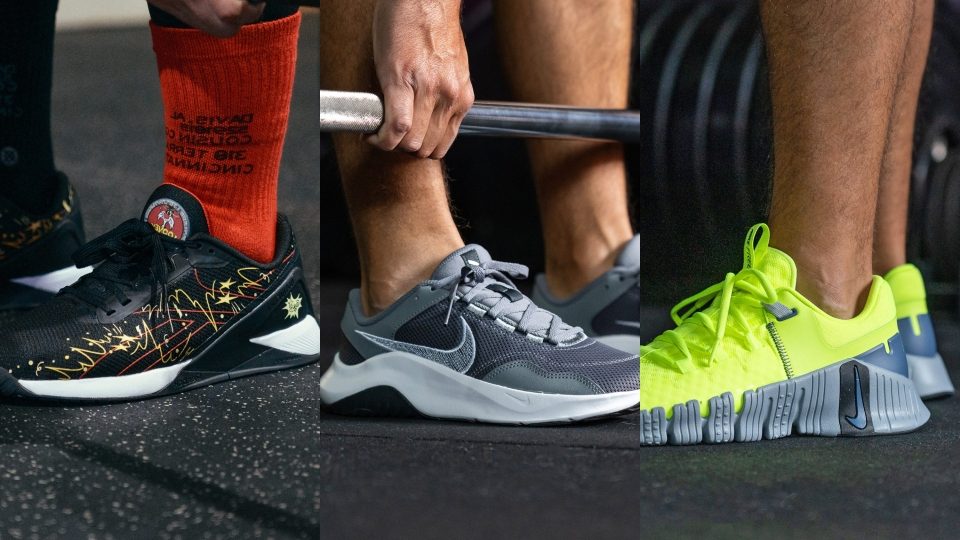What are training shoes?
Training shoes are used for training (duh). They are constructed differently from running shoes as they target exercises that are performed in the gym:
- Aerobic/anaerobic conditioning: jumping, lunging, speed and agility training, HIIT, etc.
- Strength training/weightlifting: squats, deadlifts, cleans, jerks, bench presses, etc.
Depending on the specific set of activities they accommodate, training shoes are also divided into several categories:
- cross-training/workout shoes
- Crossfit shoes
- weightlifting shoes
Cross-training/workout shoes
Can be used for most workouts + light/moderate weightlifting
- a bit more cushioning for cardio and running
- good balance of flexibility and stability
- generally lighter than Crossfit shoes
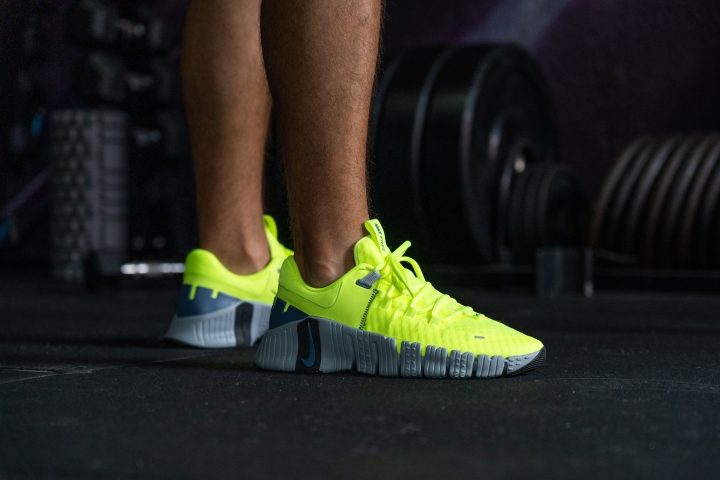
Learn more about cross-training shoes and how to choose the right one for you in our extensive guide.
Crossfit shoes
Can be used for most workouts + moderate/heavy weightlifting
- lower drop, flatter sole for multi-directional stability
- firmer midsole, better for lifting
- more durable (+protection for rope climbs)
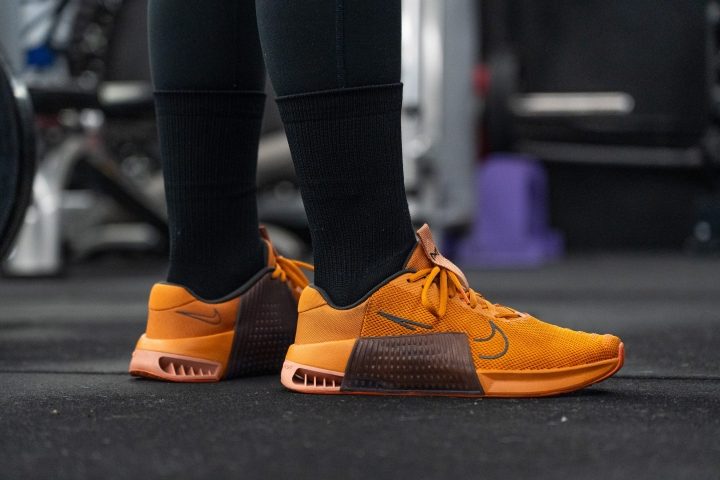
What makes Crossfit shoes different from other cross-training shoes? How to know if you need one and how to find the best one? Find answers to these questions in our guide on Crossfit shoes.
Weightlifting shoes
Can be used for weightlifting only
- elevated heels promote proper squat posture
- hard, non-compressible platforms provide lifting efficiency
- sturdy and secure foothold

See our guide on the best weightlifting shoes for more information on how to choose the right one for you. You can also learn more about the benefits of weightlifting shoes and why some people love wearing Chuck Taylor’s in our study-backed research on the topic.
Training shoes vs. running shoes
We do NOT recommend using a pair of running shoes for a gym session. Unless your workout primarily consists of running on a treadmill.
Here are a few reasons why dedicated trainers are a better option for gym use:
|
Training shoes |
Running shoes |
|
support multi-directional movements |
only support linear forward motion |
|
firmer midsole provides stability for weightlifting |
cushioned sole compresses easily under heavy loads which results in wobbling |
|
generally have a wider platform, especially in the heel and forefoot, to keep the wearer sure-footed |
foot has a higher chance of rolling over the edge of the platform if moves laterally |
|
have a flat profile for forward stability |
curved and rockered soles push the foot forward compromising stability when training |
|
have extra protection on the sides for rope climbing |
soft materials get torn and burned by the rope at the very first climb |
Lateral stability test in a training shoe
From the ground up, running shoes are designed for repetitive forward motion. They don’t have the foothold, support, or stability needed for fast lateral movements. They are also too soft and cushioned for weightlifting.
Lateral stability test in a running shoe
If you do use running shoes for the gym, make sure they have a firm, wide, and torsionally stiff platform. There are a few running shoes that meet these parameters:
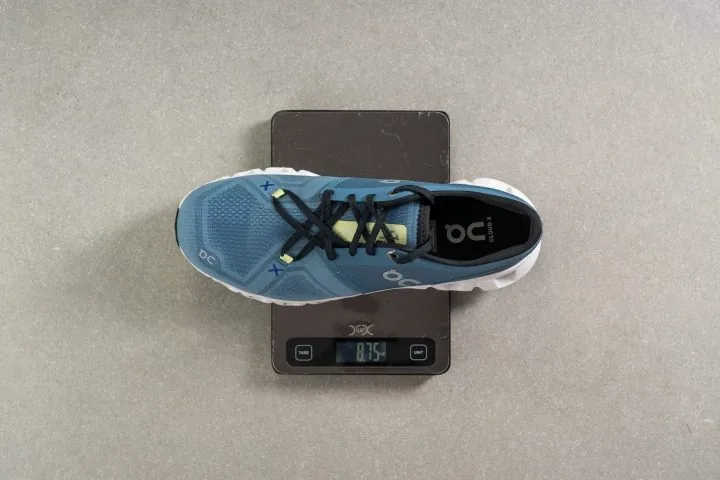
Can you run in training shoes?
The same points that make training shoes perfect for the gym fail them when it comes to running.
The amount of cushioning and impact protection is nowhere near running shoes. Not to mention that training shoes are much heavier and clunkier.
Cushioning in a training shoe
Cushioning in a running shoe
But there is some good news too.
Most cross-training and Crossfit shoes can accommodate short warmup runs of up to 3 miles. That includes short runs on a treadmill too. Just make sure that these trainers are light and flexible enough for that.
Can you walk in training shoes?
Most cross-training shoes have enough flexibility in the forefoot to bend along with the foot. But it doesn’t mean they are going to feel comfortable for all-day wear.
Luckily, some cross-training shoes are light, comfortable, and flexible enough for casual wear.
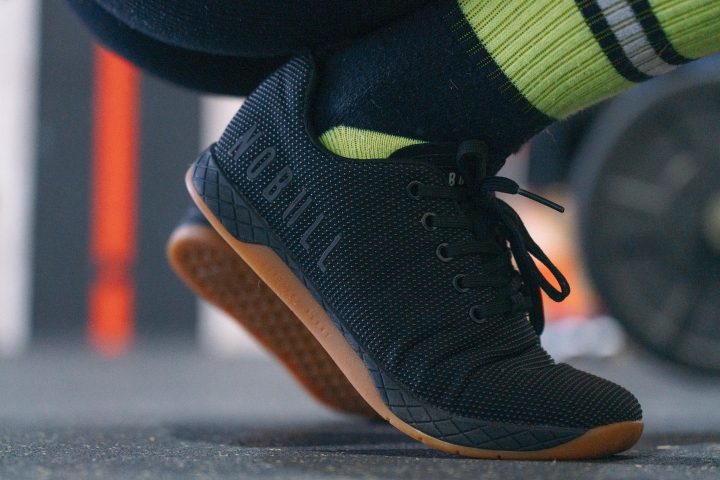
Weightlifting shoes, for example, are awful for walking anything more than 10 steps across the gym. Their hard plastic platform feels extremely clunky when walking.
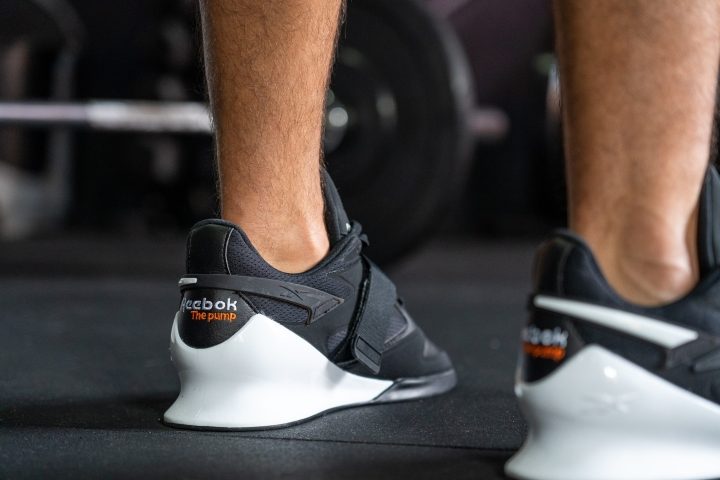
Crossfit shoes are more foot-friendly and can be worn for hours of coaching at the gym. However, you wouldn’t want to wear these expensive, technology-packed trainers outside on the asphalt a lot.
If you need a reliable pair for long hours of walking and standing on your feet, a pair of dedicated walking shoes or walkable running shoes is the best way to go.
What shoes are best for cardio and HIIT workouts?
Fast-paced and dynamic, these workout sessions call for shoes with the following characteristics:
- lightweight (less than 300g per shoe)
- cushioned (at least 24 mm of heel stack)
- flexible (easily bends at the ball of the foot)
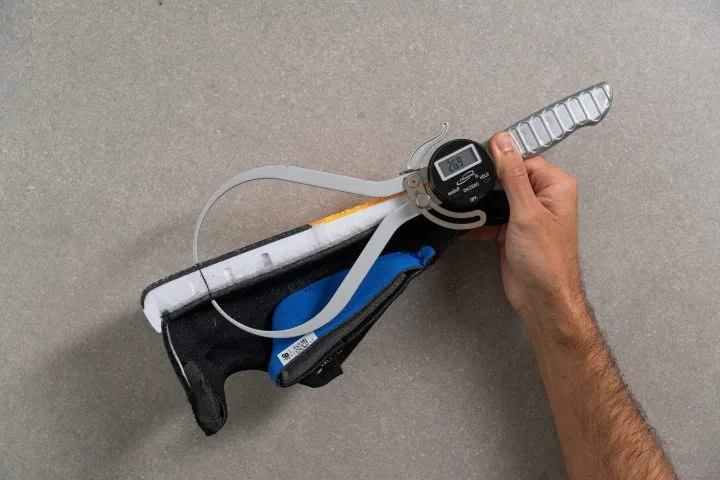
Minimalist training shoes
To enhance their training, some people switch to minimalist shoes. These trainers have very thin soles (less than 20 mm in the heel) and low heel-to-toe drops (less than 5 mm), creating a more intimate ground feel.
The benefits of this footwear include:
- increased muscle activation and foot strengthening
- better proprioception and contact with the ground
- more natural foot movement and biomechanics
- no added weight to drag you down
Even though the advantages are many, it is important to start slow when you’re transitioning to minimalist shoes to avoid injury.
link

